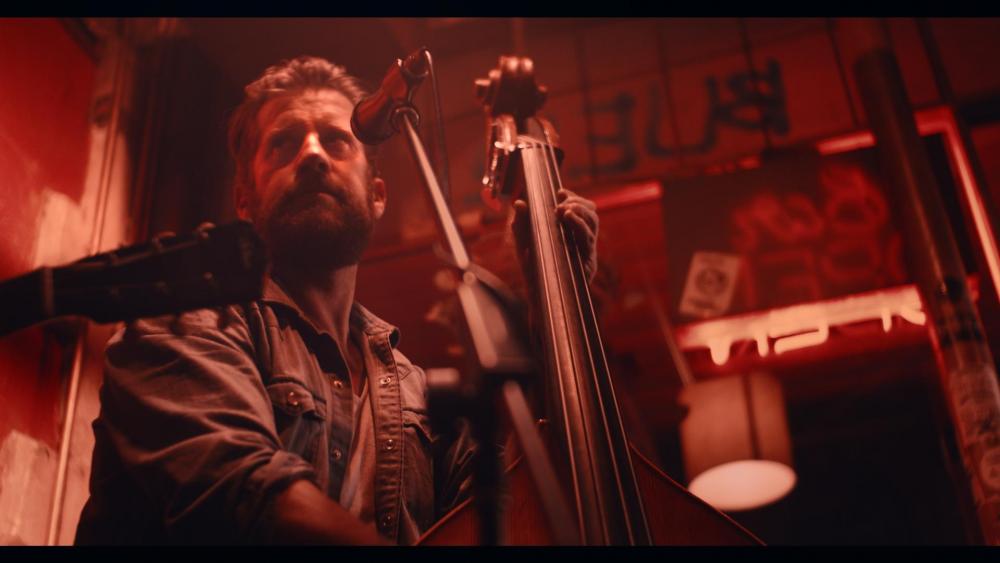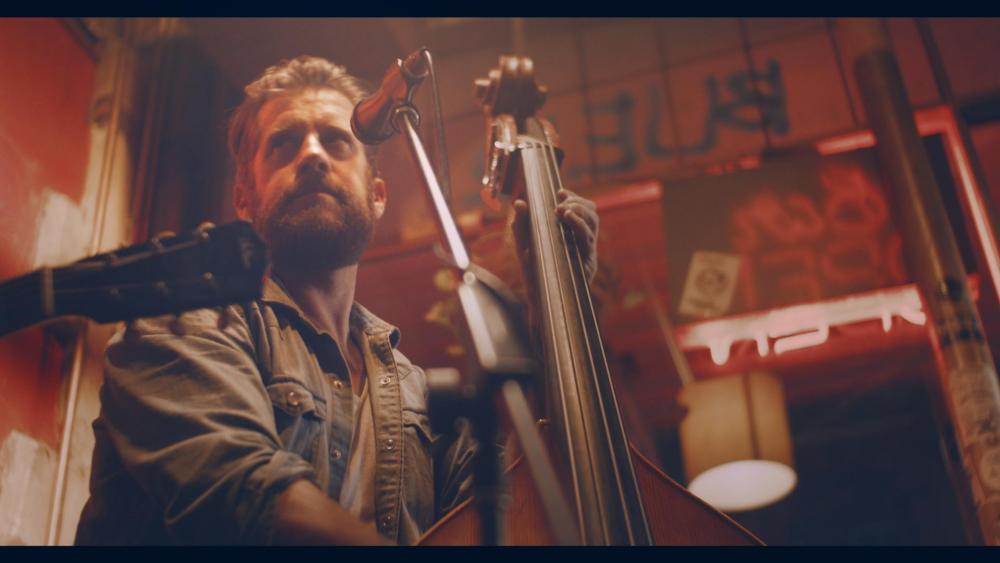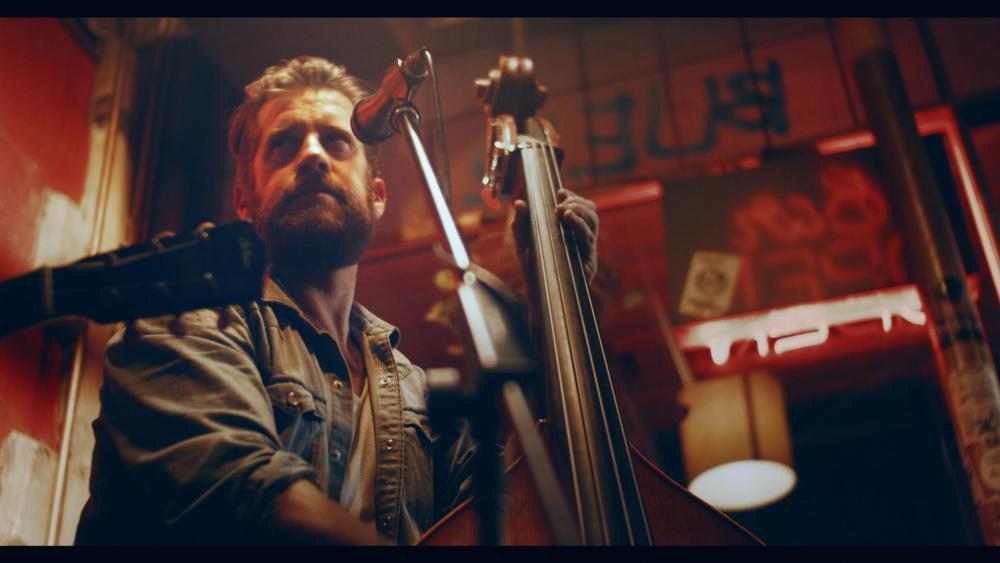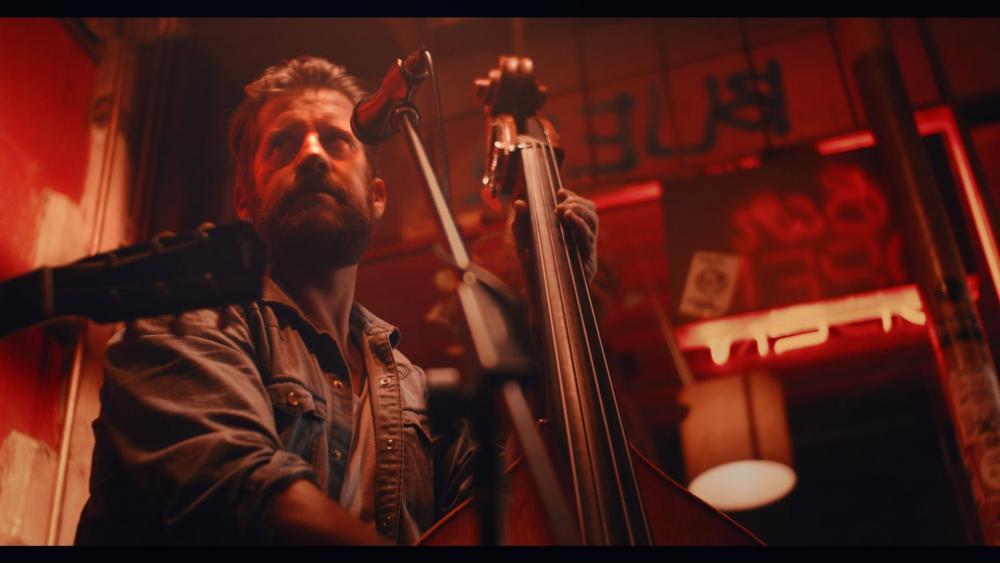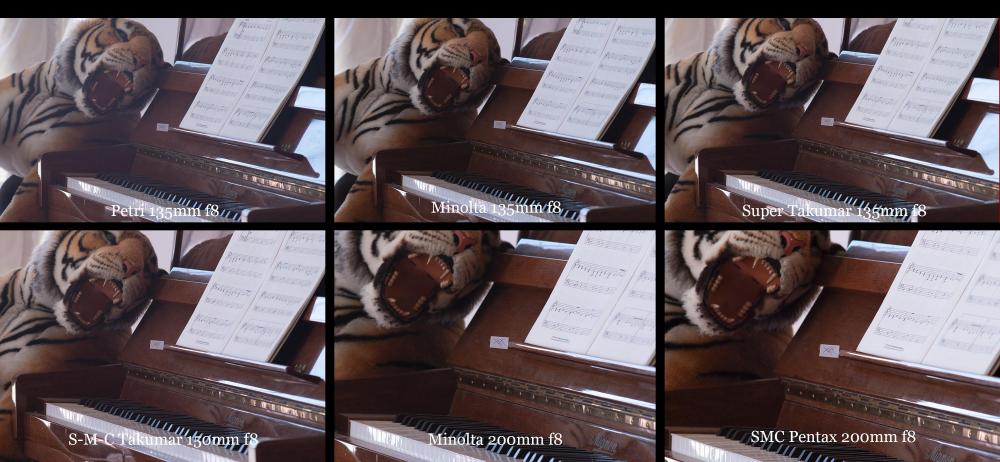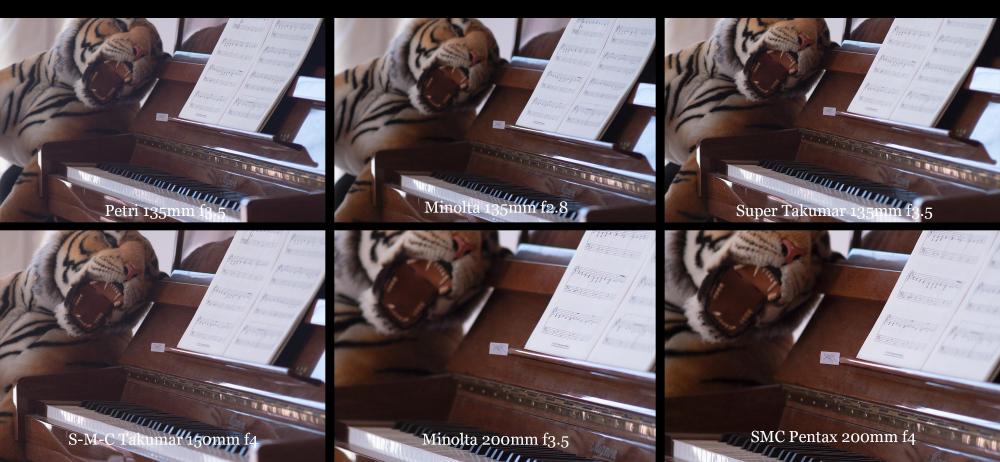-
Posts
8,027 -
Joined
-
Last visited
Content Type
Profiles
Forums
Articles
Everything posted by kye
-
One lens short? No worries - I'll mail you the Petri ASAP!
-
It would be interesting to see someone shoot a scene that includes a test chart, then apply NR in post to the XT3 and P4K until they match the level of detail and IQ from the A7III. If the A7III gives a certain resolution and noise level at some ISO but you can get the same noise level but with better resolution by applying NR in post to the other cameras then in the real-world they would beat the A7III. Far too many people are judging cameras like the entire post-production phase doesn't exist, when unfortunately half the image processing happens inside the camera these days.
-
I think it's also due to your personal preferences. There are a group of people on this forum that really appreciate the image from the original BMPCC and another group that don't rate it as being particularly special. Because of that difference, some people are willing to put up with the quirks and weaknesses of the camera, and others opt for better all-around performers as the 'downgrade' in image quality is worth it for the ease of use for them. I suspect ML is the same. Some absolutely adore the image and others don't. It also depends on what body you're shooting, what lenses you have, and what particular features you're interested in using. I really appreciated the 3x crop mode which turned my 55-250mm lens into the 35mm equivalent of a 264-1200mm zoom, and combined with the nice IS of that lens, it was even usable at 1200mm! Now I have a GH5 and the 3x crop mode of ML is still something I miss a little bit.
-
No post-processing done. The only adjustment I made between any of the shots was aperture (of course) and SS for exposure. The scene had very strong light coming from left-of-frame from a ~3m full-height window with full Australian sun, so I suspect it's a difference in the flare, and at the time I thought it was due to the coating, but the fact it varies so much between the two apertures that doesn't seem to make sense. The other thing is that the exposures weren't all identical because the apertures didn't always line up to full-stops and I didn't have infinitely adjustable SS, so just matched the exposure to the nearest third-stop SS adjustment. Maybe that is playing a role too? I'm not really sure why people don't like the Petri. The other lenses make it look low contrast, but in reality the other lenses are also low-contrast in comparison to other lenses, but unfortunately I don't own any of them and couldn't include them in the test!
-

Back on the ball - a word about the lack of updates at EOSHD recently
kye replied to Andrew - EOSHD's topic in Cameras
Hooray! -
That sounds vaguely familiar! Awesome you found it How are you finding ML? There are many people who prefer it, even to the BM cameras.
-
I think I figured it out eventually, but I can't recall what it was unfortunately, so sorry I can't be of more help. I do have a vague recollection that they are available in a different menu/mode?
-
I agree. For me, you have to look at the best examples that are available online, as a "this is possible with this equipment", combined with the excellent point below.. Absolutely. It's about what they can do combined with how reliable they are to do that, specifically for how you use them. Most lenses are great for at least one type of shooting. Even smartphone lenses/sensors - if you want deep DOF in a scene with lots of light for online publication and you use a third-party app with high-bitrate codecs then they're just fine!
-
lol at "CAT VIDEO MM/DD/YYYY" It's probably obvious, but the reason I do YMD at the start of the filename is because I can sort alphabetically and it sorts chronologically, even if you move/copy files between drives and the file system stuffs up the created/modified dates on the files. I'm kind of lucky in comparison to people with clients because I only have one brief, so I only need to be able to have the equipment to create one look (lenses, codecs, lighting, etc) but the downside is that I have the need to categorise clips by several criteria and nothing really supports that. Things like LightRoom are great for that, being able to recall images from certain dates, or certain subjects, or certain locations, or just those rated with 5 stars. I was using LR to do this for video clips, which was clumsy but it worked, until I moved to a 'real' video camera and LR doesn't understand the file formats and won't import them, so game over. In a sense video is about structuring things like CLIENT/PROJECT/DAILIES and if that's what you do then great, and if not then too bad. Also, the tools for managing footage are much more manual and tedious which is fine if you're running a big production and have time to pay attention to it, or you're not shooting most days, but when you shoot a few clips most days and it's not your day job then you really want something like the LR import tool that will sort and catalog the footage automatically on import. I wrote a unix script (I'm on Mac) to copy files and sort them into folders based upon the file creation date on the card, so I just run it and it copies all files from a card into the YMD folder structure. Of course, it's a PITA if I then rename the folder but don't delete the files from the card because then when I run the script again it doesn't realise I have a folder for that footage and so re-copies it. But I really wanted something that I could use when I was travelling and you get back to the hotel at night, and you can just put everything on charge, throw the SD card and USB HDD into the computer and hit GO and not worry about losing any footage. I'm happy to share my script if anyone is interested.
-
Yeah, the folks over at red.com seem to treat EF as a standard and have their vintage lenses modified to have EF mounts, including people who are buying sets to rent out, like the Contax Zeiss, etc. It is good when a marketplace settles on a standard because (if the standard is open) it benefits everyone. The only exceptions are lenses that have a similar flange distance to EF and therefore have to be modded but can't simply be adapted. Mounts like Konica, m42, Pentax-K and others are probably too similar to be able to fit an adapter, and the Konica is shorter than EF, so definitely no adapters! This is where having an adapter from that system to your mirrorless system comes in, so the EF mount works for everyone on lenses, but not on cameras. Can you white-balance to compensate for it, or is it a more complex colour shift?
-
Ah, maybe because I'm an International visitor. I thought the UK wasn't keen on those any more? ???
-
There are 3 approaches that you might consider: Keep everything - storage is cheap If you're never going to look at it again then delete it, or keep it for a while and if after that time it's not still relevant then delete Upload it to YT in the highest quality you can, set it to be a private video, then delete it locally, and if you ever need it again it's "backed up" I kind of do the last one for some things. For example, with my various tests and experiments one of the reasons I document them online is that it means my observations and conclusions are essentially backed up for me, so if I need to refer back (which I do sometimes) then I know where to go to find them.
-
recently @BTM_Pix compared the 24mm and 85mm Samyangs to other well-regarded lenses and they punched well above their weight. I'm assuming that the F1.4 stills versions are the same lens as the T1.5 cine versions. Lenses are very subjective, so you really need to look and assess for yourself. One mans trash... etc. Oh, and that kit is showing as being on special now.. £1,915.83 for me, unless I'm special https://cvp.com/product/samyang_7413-vdslr-lens-kit-5-canon
-
and just for fun, here's one where I partially desaturate the image, then tint it back to being red: It evens out the colours a bit, and "de-muds" the shadows nicely.
-
For my curves-only attempts, I'm limiting myself to the Lum-vs-Lum curve, so no fancy Hue-vs-Hue or anything like that. Curves-only challenge #1, a softer more film-like grade: Curves-only challenge #2 - a more contrasty grade: Normal grading #1: That was quite an interesting one to grade.. very contrasty and that clipped red channel was tricky to recover in a natural way. Plus the strong red light made the denim jacket an awful colour if you tried to WB it 'correctly'.. the jacket on my first attempt looks ok to me, the second looks awful, although I managed to balance the green-magenta ok using the curves, and the last one is more just embracing the fact it's stage lighting and not meant to be compensated for.
-
Probably less useful to others, but I organise very differently to most. Essentially I am documenting the history of my family, I don't really have 'projects' or 'clients'. I will do separate videos from a trip or a day out, but I may also do a 'year in review' project, or a '21st birthday mashup of embarrassing moments' type thing. So I organise by date, with folders in a YYYY/YYYY-MM-DD XXXXXXXX format, where XXXXX is the description of what happened that day (if it was significant). My challenge is that in this format a project sits across multiple folders, but it works ok. I don't think any organisation system is perfect, you're always trading off one aspect against another.
-
I shot the second part of my lens test... 135mm / 150mm / 200mm vintage lenses.
-
Telephotos.... All lenses wide open: All lenses at f8: The 150mm S-M-C Takumar has fungus in it (I couldn't open it to clean it!) so some of the haze will be to do with that. The Petri is the obvious winner here when you take into account the price - $4 on ebay. Beyond that, the Pentax lenses are all in wonderful condition, and the Minoltas are seriously worn, the 135mm especially, but still deliver a lovely image. I can't over-state how nice the Pentax lenses are to use, the dials are smoother than silk, and the build quality and feel are spectacular. They are on a par with my Voigtlander 17.5mm 0.95 which cost almost 50 times as much. I'm keeping the Minoltas and the Petri because they have the focus the correct direction for my muscle memory, but otherwise the Pentax lenses would be just great.
-
As @Towd says, this stuff is personal and I'd suggest experimenting and seeing what you like. Some random thoughts: You can try controlling how strongly the sharpening effect is applied by adjusting the blend opacity or the output key of that node Try the different OFX plugins, I particularly like the Soften and Sharpen plugin, as it gives you control over different grain sizes You can easily swap the order of nodes around, I don't know the keyboard combination, but if you drag one node on top of another and hold down one of the modifier keys, it will swap the two nodes, so you can easily change the order of operations and see if things get better or worse Only sharpening the edges can also be quite different to applying the effect everywhere
-
What do you mean by 'portable' ? If you're just talking about something you can make a case for and then pack/unpack then it's really a 'what is the best reference monitor' type question. Of course, if you're interested in something that's rack mounted or whatever then that's a different question. I'd suggest searching in these sites: https://www.liftgammagain.com/forum/index.php https://lowepost.com/forums/forum/33-hardware/ https://postperspective.com https://www.premiumbeat.com/blog/ https://www.provideocoalition.com
-
It's been a long time for me, but I remember just passing a pointer and then navigating the data structure as required. Oh the days of writing double-linked-list databases
-
Yes, it can take a while to understand the vibe of a lens and work out what to shoot with it that will suit. I look forward to seeing what you come up with. I don't think I've ever seen video from a pinhole camera before. One good thing - at f92 you won't be needing NDs!
-
I'd suggest waiting to see how it performs before judging such a product. It might be one of those "I thought the normal ones were good, but...." situations. and in terms of buying another adapter, just go and look at the price of the alternative RAW shooting cameras - that should calm you down a little
-
I think I recall some of those horizontal halos that anamorphics give, so you might be right. I guess I didn't anticipate an anamorphic lens having any circular artefacts considering that neither the bokeh or halos are circular, but I'm definitely not familiar with them.
-
Question: what kind of lens makes a circular flare on the very edges of the image? ie, something that looks like this [(xyz)] where the [ ] is the frame, the ( ) are the flares (very similar shape actually) and xyz is the frame contents. I saw them a lot on The Expanse S3 (which is great BTW!)




